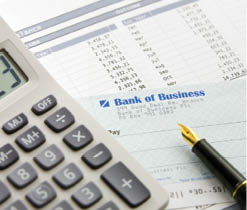The Counterintuitive Formula Your Financial Advisor Doesn’t Know
:dropcap_open:H:dropcap_close:int: It’s not about your loan interest rates. As a financial advocate to Chiropractors, I deal with this issue frequently with my clients. You want to get out of debt so you can reduce your risk, increase your cash flow, and have greater peace of mind, right? Here’s the fastest, safest, and most sustainable way to do it:
 1. Roll Non-Deductible Loan Interest into Deductible Loans
1. Roll Non-Deductible Loan Interest into Deductible LoansAssuming you have enough home equity and good enough credit, refinance your mortgage and roll as much of your non-deductible loans (credit cards, auto loans, etc.) into it as possible. The tax deduction will increase your cash flow.
2. Roll Short-Term, High-Interest Loans into Long-Term, Low-Interest Loans
Again, the goal is to minimize your interest payments and maximize your cash flow. Then, you can attack your remaining debt strategically, using your increased cash flow to eliminate one loan at a time.
CAUTION: Do NOT do this if you’re undisciplined and your spending is out of control. If you’re just going to charge your credit cards back up again, you’ll just sink deeper into debt.
3. Improve Your Credit Score
There’s a smorgasbord of companies and resources to help you do this. By increasing your credit score you get better loan interest rates, which lowers your payments and puts more money in your pocket.
4. The Secret Sauce: Cash Flow Index
Here’s where the rubber hits the road. After minimizing your payments and maximizing your cash flow, you’re now prepared to focus on one loan at a time, thus creating the “snowball effect” until you’re completely debt-free.
Most financial advisors and pundits will tell you to pay off your loans with the highest interest rates first. My advice is to ignore the interest rate and use my Cash Flow Index to determine which debt to pay off first.
To determine your Cash Flow Index, take all your various loan balances and divide each of them by their respective payments. Whichever one has the lowest number is the one you should pay off first.
For example:
|
Home Loan Balance: $228,000
Interest Rate: 7%
Monthly Payment: $1,665
Cash Flow Index: 137
($228,000 ÷ $1,665)
|
Credit Card Balance: $13,000 Interest Rate: 12% Monthly Payment: $260 Cash Flow Index: 50 |
|
Auto Loan Balance: $16,500
Interest Rate: 8%
Monthly Payment: $450
Cash Flow Index: 37
|
Student Loan: $107,000 Interest Rate: 3.9% Monthly Payment: $650 Cash Flow Index: 165 |
In this example, it seems to make sense to pay off the credit card first because it has the highest interest rate. But the Cash Flow Index reveals that the auto loan should be paid off first.
The trick is to pay off debt that gives you the greatest cash flow with the least investment. A high Cash Flow Index means your loan balance is high relative to the payment, while a low Cash Flow Index means your balance is low but with a high payment. Knock out those high payments first and you free up cash to work on other debts.
In this case, by paying off the auto loan first, you free up more monthly cash, which can then be applied toward the credit card balance. Paying off the auto loan first means you can pay off both faster than if you started with the credit card.
5. Address the Risk Factor
This strategy isn’t just about paying off debt faster—it’s also about reducing your risk. Banks and other financial institutions tell you to pay off debts that lessen their risk while increasing yours. For instance, if you put more equity into your home, you are still at risk for being foreclosed on if you can’t make a payment. In fact, they may be more willing to foreclose if you have more equity in your home.
The rule here is to not directly pay down loans that keep you in the same payment (as opposed to loans for which the payment reduces as you pay them down). Rather, save the money that you would have paid on the loan balance in a separate account until you have enough to pay off the loan in full.
In those types of loans, you’re worsening your Cash Flow Index with every payment. It doesn’t give you immediate benefit, and it increases your risk by reducing your liquidity.
6. Get to the Roots
As I explain in my book, Killing Sacred Cows, without a fundamental change in consciousness regarding debt, none of these strategies will work long-term. You need to identify and solve the root causes of debt, rather than hacking at the byproducts (interest and bondage) with nothing but techniques.
Before you employ these techniques, ask yourself questions like these:
- Why did I incur each of my debts? What was the purpose? Was my desire to consume or to produce?
- When I incurred debt, how did I justify it?
- Do I seek consolation in material things? If so, what could replace the feelings I receive from borrowing to purchase material things?
- Was my debt caused by gambling—putting money into things I didn’t understand and couldn’t control? If so, what can I learn from this and how can I be wiser in the future?
Getting—and staying—out of debt requires a fundamental shift in outlook and behavior. You must change who you are, then what you do flows from that change. If you’re struggling with debt, focus on increasing your knowledge, improving your mindset, and developing your character. The practical solutions to your debt problem will naturally follow.
Garrett Gunderson is a financial advocate and the author of the New York Times, Wall Street Journal, USA Today, and Amazon bestseller Killing Sacred Cows: Overcoming the Financial Myths that are Destroying Your Prosperity.
